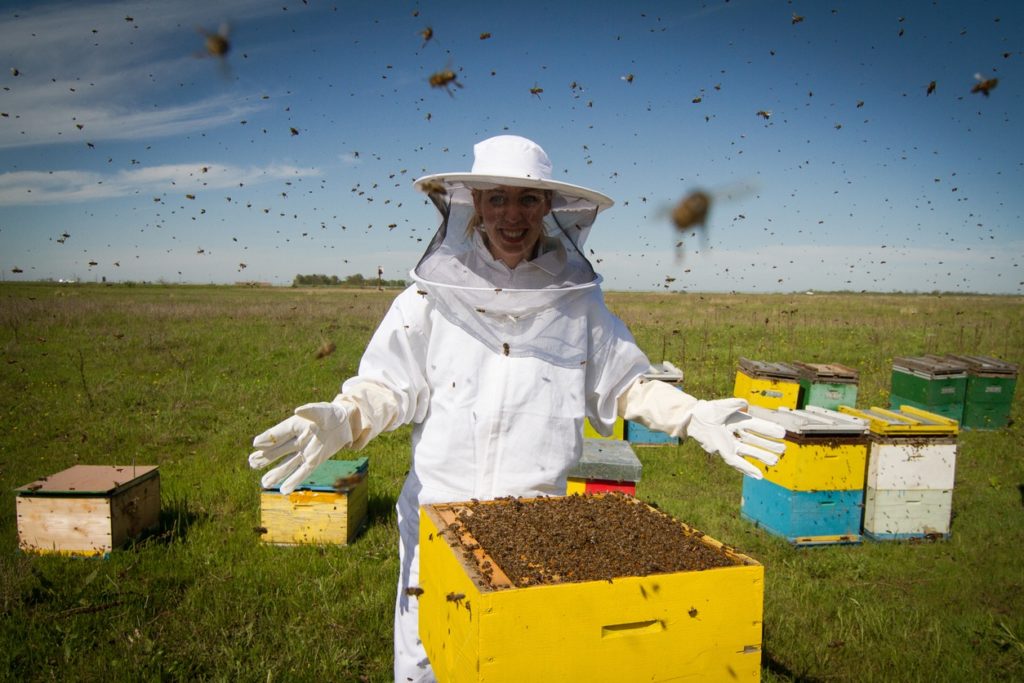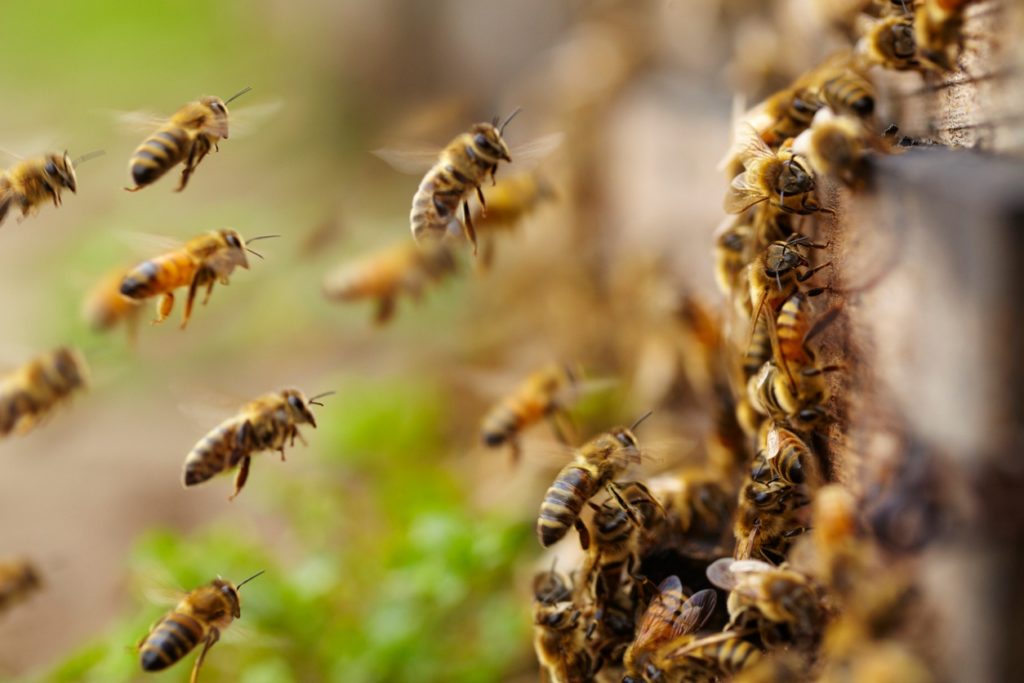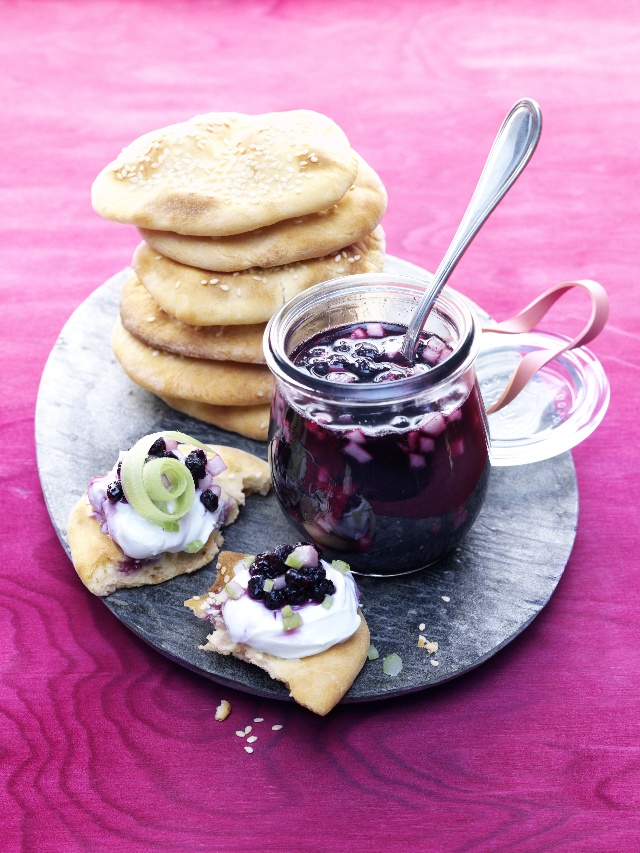Honey Bees on the Wild Blueberry Barrens—An Annual Pollination Story
Editorial consulting by the Culinary Institute of America
The Running of the Bulls (July 7), the return of the Swallows to Central California (March 19), the opening of Copper River Salmon season (May 16), the release of the Beaujolais Nouveau (third Thursday in November). These dates are all celebrated around the country and the world, most with food, all because they have a special significance. Today we can add another lesser known date to our watch list. The third week in May is traditionally when “The Running of the Bees” comes to Maine.

Each year, as many as 80,000 hives of bees are brought to the coastal and Downeast counties of Maine to supplement the over 100 species of native bees from the area, all to help pollinate Maine’s Wild Blueberries. With as many as nine million blueberry flowers per acre, that’s a lot for even these busy workers to do in a short time. The pollination window is typically open from Mother’s Day to Father’s Day, or just about five weeks. Working from sun-up to sun down, the bees take no lunch breaks. Some species of bees return to their hives full of pollen and nectar every five minutes, potentially putting hundreds of miles on their tiny wings every day.
Only about 20% of the Wild Blueberry population is self-pollinating. The remainder of the flora needs extra help from some winged fauna. Pollinators such as flies, moths, butterflies and humming birds are not physically effective for the job, leaving all the heavy lifting to the bees. The shape of the flower and position of the pollen containing stamen make it necessary for the flower to be shaken or vibrated to release the pollen. The “High C” resonance of the bumble bee makes this an easy task. A fully loaded bumble bee can deposit as many as 25 grains of pollen onto a receptive stigma in one shot, as compared with only about 3-5 from a honey bee. It seems that bumble bees, being native to the area, are a bit more adept at the practice than the interloping honey bees.
[blog_cta post_id=”16167″]
Recently, we were heartened to learn that Dr. Frank Drummond, insect ecologist at the University of Maine and the state’s leading expert on honeybees and wild native bees, is cautiously optimistic about the state of Maine’s native bee population. In a recent article in the Bangor Daily News, Drummond stated that the wild native bee community appears to be faring better than wild native bees in other states. “I think it’s a very optimistic story,” he told the newspaper. “In general, it seems that most of our native bees are pretty stable and not really in decline.”

In fact, the Wild Blueberry industry has been working to support Maine’s native pollinators by practicing integrated pest management so that pesticides are only used when pest densities are at a level that is likely to cause economic loss. Part of this strategy is to use the least toxic insecticides, such as Bt (Bacillus thuringiensis), only when an application is necessary. In addition, some Wild Blueberry growers have planted pollinator reservoirs or gardens to enhance bee numbers by providing flowering plants for bee food when the crop is not in bloom. The Wild Blueberry industry has also funded research that has led to knowledge about protecting native bees.
The story of the bees is a compelling one – especially in this day when consumers demand to know more about where their food is coming from and how it is produced. Being able to tell the story of the bees adds an element of transparency to the process and intrigue to the products. Imagine hordes of bees buzzing around a starting gate waiting for just the right moment. A whistle blows, the gate is lifted, and they’re off. Bees race to the flowers and back to the hives much like Nyquist, American Pharoah, California Chrome, and other thoroughbreds in the Kentucky Derby on the first Saturday in May.

With the running of the bees, we get yet another spring rite of passage and the promise of Wild Blueberries in the coming months. We also get an amazing, local, seasonal, story filled product – Wild Blueberry Honey. Gathered on the Wild Blueberry barrens throughout Maine, this honey packs a wallop of earthy, fruity, and sweet terroir that will win the hearts and minds of consumers in farmers’ markets and supermarkets alike.
So, let’s hear it for the bees. They work hard for the honey and produce billions of tasty Wild Blueberries in the process.
[blog_cta post_id=”16169″]
About the Author

Chef David Kamen, PCIII, MBA
Project Manager, CIA Consulting
Chef David Kamen has enjoyed a diverse career in the culinary world. He served as executive chef of St. Andrew’s Café, one of five award-winning public restaurants on the Culinary Institute of America Hyde Park campus. He’s also been professor of culinary arts at CIA, where he taught everything from culinary skills development, to seafood and meat identification and fabrication, to breakfast cookery. Today, Chef Kamen is a project manager for CIA Consulting, where he is responsible for planning and managing custom projects for professional foodservice operations. A certified hospitality educator, Kamen earned dual certification from the CIA and the American Culinary Federation as a ProChef Level III (PCIII) and Certified Executive Chef (CEC). He also holds a B.A. and M.A. in Business Administration from Empire State College.

